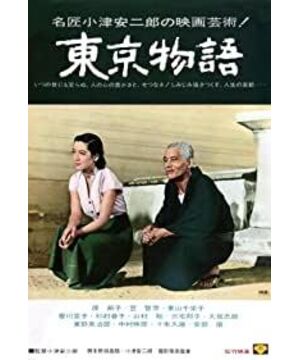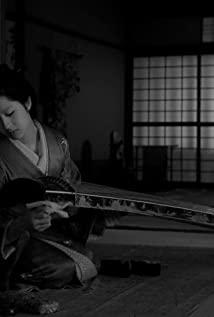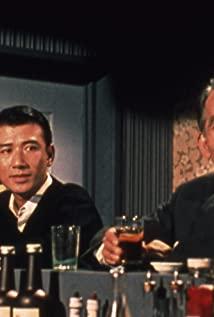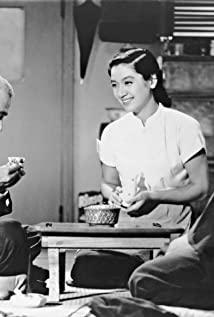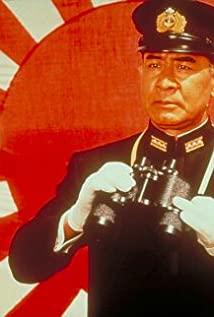Due to the source of the film, the earliest Ozu film I watched was not "Tokyo Story", but another silent film "Lady and the Beard" shot in the early 1930s. A big difference. According to Donald Ritchie's account of Ozu's life in the book "Ozu", such a transformation is related to the richness of his life experience and the natural expression of his mature artistic exploration. In addition, it is probably also related to the dominance he has gradually gained since he became famous. He can no longer be completely controlled by the market, but can focus on shooting the films he pursues. This is actually what many well-known directors did before they became famous. road. Even if the two were later confirmed to be not contradictory, "Tokyo Story" achieved unprecedented success after its release, and the subsequent film was released worldwide, which also received numerous acclaim. Later, the film was recognized as one of the most classic films in Japanese film history, and was directly listed as the teaching material of many film academies.
Yasujiro Ozu was born in 1903. He made 54 films in his life. Many of the films later became classics, and together with Akira Kurosawa and Kenji Mizoguchi are known as the three major directors in Japanese film history. Ozu's masterpiece is recognized as "Tokyo Story" released in 1953. The background of the film is Japan after the war. The process of industrialization has accelerated urbanization. In the rapidly changing society, the younger generation after the war has begun to have new pursuits. Many young people living in small cities and villages are not satisfied with Their own situation, began to flock to big cities like Tokyo to seek development. Young people who left their parents gradually established their own small families in the city, and the family relationship built on the traditional family system was seriously challenged (for a deep understanding of the relationship between the traditional family system in Japan, please refer to the American Benedict’s description of Japan. The sociological work "Chrysanthemum and the Sword"), and gradually disintegrated. The conflict between the values of the two generations, representing urban and rural, modern and traditional, constituted the main social psychology of Japanese society during this period. The film tells the story of an elderly couple from the small city of Onomichi who went to Tokyo to visit their married children. After living in Tokyo for a few days, the elderly found that their children were not doing well, and the new families they had established were already There is no longer room for two old people. The old man was treated coldly in Tokyo, and after returning home, the old woman died of illness. The children went home to die for their mother, and then left one by one, leaving their father alone to face life. This is an ordinary story that happened in an ordinary family in Japan at that time, but it has a universal significance and is a microcosm of Japanese society at that time. According to Ozu himself, what he wants to show through the film is: "Through the growth of children, we can spy on the disintegration process of the Japanese family system."
In the film, loneliness is the common psychology of the elderly. This sentiment is evident when Tokyo reunites with old friends, a self-evident loneliness. The cruel reality makes the children's lives not as good as the elderly expected; the children's new family has no room for the elderly; the geographical barriers make it extravagant to meet relatives; Invisible barriers; at the same time, the drastic changes of the times have caused the elderly to drift away from the mainstream values of this society... Because of this, reminiscence seems to be more and more important in the lives of the elderly, and the elderly do not complain about the indifference of their children. , but tacitly accepted such a change, and they sincerely hope that their children can live better, which is also a part of traditional Japanese values.
Ozu narrates all this with his plain lens. The film does not see complicated plots and fancy techniques, but describes everything truthfully with sincerity and without value judgment. The extensive use of fixed-angle long shots gives people a sense of reality and time to think. In a sense, this is more like a documentary about life issues. The famous German director Wim Wenders (also my favorite director) went to Tokyo in the 1980s to shoot a documentary commemorating Ozu, the city depicted in Ozu's films. In the film, Wenders said: (the years before Ozu's death) "Although the economy was so backward and even degenerate at that time, Ozu's films did explain to us the same themes, the same characters, the same places again and again. It's Tokyo. This history covers 40 years of changes in Japan, and this description is also international, through which we can see all the families around the world, understand its essence, and become familiar with its intentions - show The image of human beings in this century, a useful, true and accurate image.” (edited and abridged from the original text)
Japan in the film, Hong Kong growing up with the baby boomers, Taiwan during the Four Little Dragons, and after the reform and opening up Mainland China is very similar. The confusion of that era is also reflected on me. The tenderness I feel is probably the reason why I like this movie. The charm of movies stems from this. With the perception of reality and thinking about life, we can be more tolerant of the age we live in and understand the taste of life.
On December 12, 1963, Ozu passed away on his 60th birthday. On his tombstone, only the word "No" is engraved, which symbolizes "nothingness" and means everything.
View more about Tokyo Story reviews


